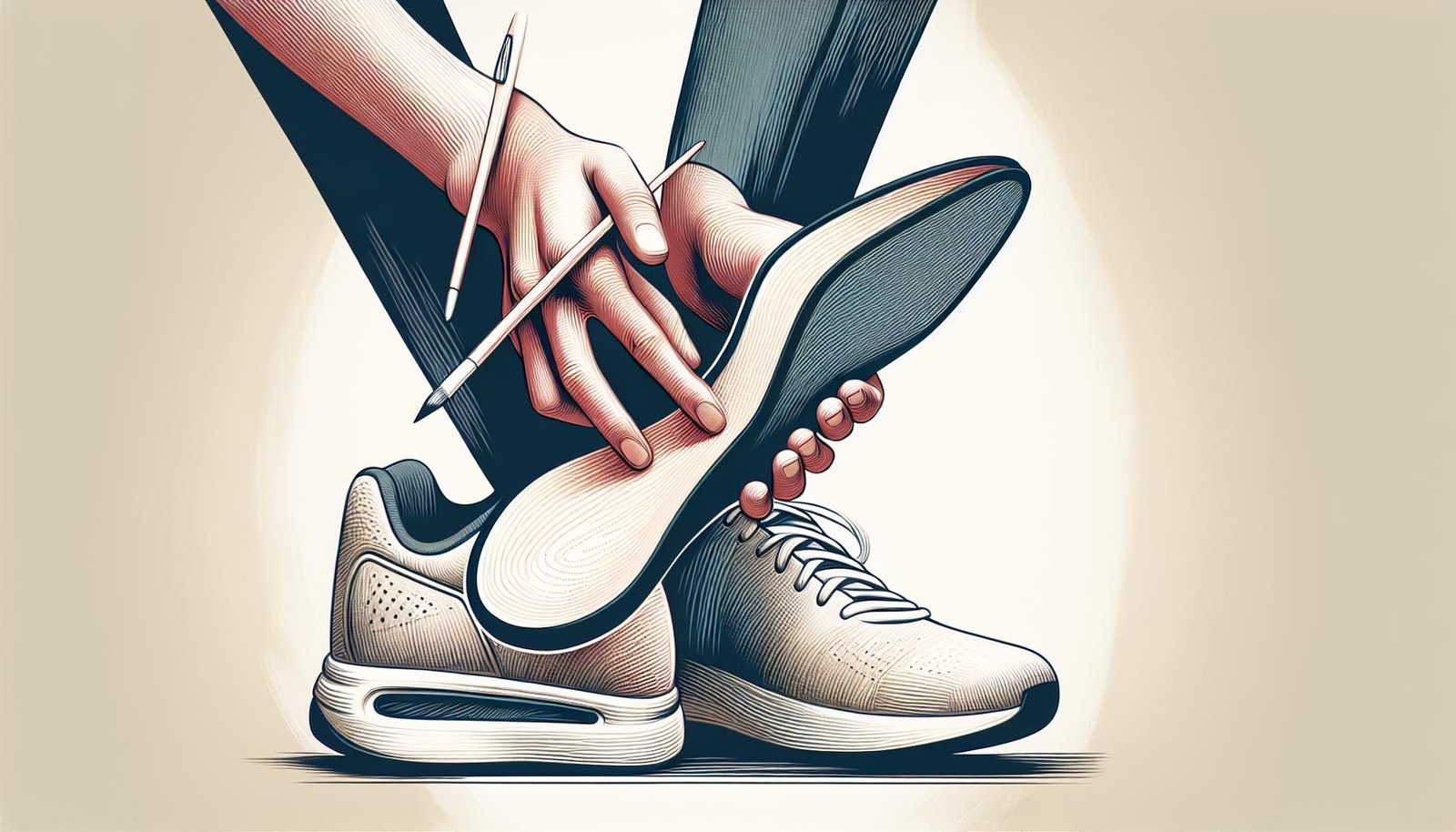How Shoe Insoles Work: Unlocking Comfort and Support
Ever wondered why slipping on a pair of shoe insoles feels like walking on clouds? I’ve been there, and let me tell you, it’s not just about cushioning. The magic of shoe insoles lies in their design and functionality, transforming your footwear experience.
Shoe insoles aren’t just about comfort; they’re a game-changer for foot health and performance. From providing arch support to distributing pressure evenly, they work tirelessly beneath your feet. Let’s dive into how these unsung heroes of our shoes make every step better.
Key Takeaways
- Shoe insoles provide essential foot support and comfort by redistributing pressure evenly across the foot, crucial for preventing discomfort, pain, and injuries over time.
- Different types of shoe insoles, such as comfort insoles, support insoles, custom orthotics, and heat-moldable insoles, cater to various needs, from enhancing comfort to correcting foot alignment.
- The materials used in shoe insoles, like memory foam, gel, and air cushions, play a significant role in cushioning and shock absorption, enhancing both comfort and performance for everyday wear and physical activities.
- Proper arch support in shoe insoles is vital for distributing pressure, improving posture and alignment, and enhancing performance and stamina, contributing significantly to overall foot health and body wellness.
Importance of Foot Support

When I first delved into the world of shoe insoles, I quickly realized the profound impact they have on overall foot health. It’s not just about cushioning your step; it’s about properly supporting the foot to prevent a myriad of issues. For many, the significance of foot support provided by shoe insoles might not be immediately apparent, but once understood, it’s clear why they’re so vital.
The foot is a complex structure, comprising 26 bones, 33 joints, and over 100 muscles, tendons, and ligaments. Each step we take exerts pressure, and without adequate support, this pressure can lead to discomfort, pain, and injuries over time. Shoe insoles step in to redistribute this pressure more evenly, providing relief and protection to the foot’s natural architecture.
Proper foot support from insoles ensures that our feet are not only comfortable but are also aligned correctly with every step. This alignment is critical in preventing overpronation or supination—conditions that can lead to more severe problems such as plantar fasciitis, Achilles tendonitis, and even knee, hip, and back pain. By wearing shoe insoles that offer the right arch support, I’ve personally noticed a significant reduction in fatigue and discomfort during long days on my feet.
Moreover, for those of us who lead active lifestyles, investing in insoles with good foot support doesn’t just improve comfort—it enhances performance. Whether it’s running, hiking, or standing for extended periods, shoe insoles make these activities more enjoyable and safer. They help absorb impact, reduce strain on our feet, and prevent injuries that could sideline us from doing what we love.
In my journey to better foot health, I’ve learned that the importance of foot support cannot be overstated. Shoe insoles are a simple yet effective solution for improving our daily comfort and protecting our long-term foot health. By selecting insoles that provide the right amount of support, we’re not just investing in the comfort of our shoes; we’re investing in our overall well-being.
Types of Shoe Insoles

When I delve into the world of shoe insoles, it quickly becomes apparent that not all insoles are created equal. There’s a vast array of options available, each designed to address specific needs, from enhancing comfort to correcting foot alignment.
Comfort Insoles are typically made with soft materials, such as gel or foam, and work wonders for daily wear, especially if you’re on your feet for hours. They’re a go-to choice for anyone looking to add an extra layer of cushioning to their shoes, without needing significant support for foot alignment.
Support Insoles, on the other hand, are crafted with a firmer material. These are designed to offer not just comfort, but also structural support to correct foot alignment issues such as overpronation or supination. They’re ideal for individuals experiencing foot discomfort due to improper foot alignment or those seeking to improve their athletic performance.
For those requiring a more tailored solution, Custom Orthotics are the pinnacle of personalized foot care. Typically prescribed and designed by a podiatrist, these insoles are molded to the exact contours of your feet, targeting specific areas with precision. While they’re the most expensive option, the level of customization and support they offer is unmatched.
Lastly, Heat-moldable Insoles strike a balance between off-the-shelf and custom options. By heating these insoles at home, they can be molded to fit the shape of your foot. While not as precise as custom orthotics, they offer a higher degree of personalization compared to standard insoles and are a cost-effective way to achieve a better fit.
Understanding the various types of insoles is foundational to making an informed decision that can significantly impact your daily comfort and long-term foot health.
Mechanism of Cushioning

When I first delved into the world of shoe insoles, the question of how they provide such effective cushioning captivated me. The mechanism behind this is both fascinating and imperative for anyone looking to enhance their foot comfort or address specific foot conditions.
At the core of cushioning technology, materials play a pivotal role. Most comfort insoles are crafted from memory foam, gel, or air-cushioned pockets. These materials are engineered to absorb shock and distribute pressure evenly across the foot. This is crucial, especially when you consider the amount of force our feet endure with each step. For a bit of perspective, when walking, the force on our feet can be 1.5 times our body weight, and this increases to nearly 3 times when running.
| Material Type | Benefits |
|---|---|
| Memory Foam | Molds to the foot’s shape |
| Gel | Offers superior shock absorption |
| Air Cushions | Provides light, flexible cushioning |
Memory foam insoles are particularly noteworthy. They’re designed to mold to the exact shape of your foot, providing personalized comfort that improves over time. On the other hand, gel insoles excel in shock absorption, making them ideal for high-impact activities where reducing stress on the feet and joints is paramount. Lastly, air-cushioned insoles offer a unique blend of flexibility and cushioning, which makes them perfect for adapting to various terrains and activities without adding significant weight to the shoe.
Understanding the mechanism of cushioning in shoe insoles illuminates why selecting the right type is essential. Whether it’s for daily wear or specific athletic endeavors, the ability to mitigate pressure and absorb shock can drastically improve one’s quality of life and performance.
Benefits of Arch Support

When I first explored the world of shoe insoles, the topic of arch support frequently surfaced as a critical component of foot health and overall comfort. It’s fascinating to understand the benefits that proper arch support brings to the table, and why so many people, myself included, consider it a non-negotiable feature in an insole.
Arch support plays a pivotal role in distributing pressure across the entirety of the foot. This distribution is vital for those like me who spend a significant amount of time on their feet, either standing or walking. Without adequate support, the arches of the feet tend to absorb extra stress, which can lead to discomfort and, over time, more serious conditions such as plantar fasciitis or flat feet.
Moreover, incorporating arch support in shoe insoles helps in improving posture and alignment. When the feet are not properly supported, it can lead to misalignment of the knees, hips, and back. I’ve noticed firsthand how the right insole can make a noticeable difference in how my body feels by the end of the day. It’s not just about foot comfort; it’s about holistic body wellness.
For athletes or anyone engaged in regular physical activities, arch support in insoles can also lead to enhanced performance and stamina. Proper alignment and pressure distribution mean that the body works more efficiently, reducing fatigue and the risk of injuries. This is something I’ve experienced during my own workouts and hikes. The right insole not only makes my shoes more comfortable but also seems to energize my stride.
In the quest for optimal foot health, considering the benefits of arch support in shoe insoles is a step in the right direction. Whether it’s for daily wear or specific activities, understanding the significance of this feature is crucial in making an informed decision that can profoundly affect one’s quality of life and physical well-being.
Conclusion
I’ve explored the mechanics behind shoe insoles and their pivotal role in foot health. It’s clear that investing in the right insoles with adequate arch support isn’t just about comfort—it’s about safeguarding our mobility and enhancing our overall quality of life. Whether you’re an athlete looking to boost performance or someone seeking day-to-day comfort, understanding the function and benefits of insoles is a step in the right direction. Remember, our feet carry us through life; it’s only right we provide them with the support they deserve.
Frequently Asked Questions
What is arch support in shoe insoles?
Arch support in shoe insoles is a designed feature that helps distribute pressure across the foot. This reduces stress on the arches, enhancing comfort and potentially preventing conditions like plantar fasciitis.
Why is arch support important?
Arch support is crucial for maintaining proper foot health and overall comfort. It assists in improving posture, aligning the body, and can enhance athletic performance by promoting efficient body mechanics and reducing fatigue.
How can arch support insoles improve quality of life?
By reducing stress on the feet, improving body alignment, and enhancing comfort, arch support insoles can significantly improve the quality of life. They help in preventing foot conditions and reducing fatigue, making daily activities and specific physical tasks more manageable.
Can arch support insoles help athletes?
Yes, athletes can benefit from arch support insoles as they promote efficient body mechanics, reduce fatigue, and enhance performance. Proper arch support helps in distributing pressure evenly across the feet, which is essential for athletes engaged in high-impact and endurance activities.













[…] powders are designed to absorb moisture and reduce friction, which can help prevent foot odor. They come in a variety of formulas, including talc-based, […]